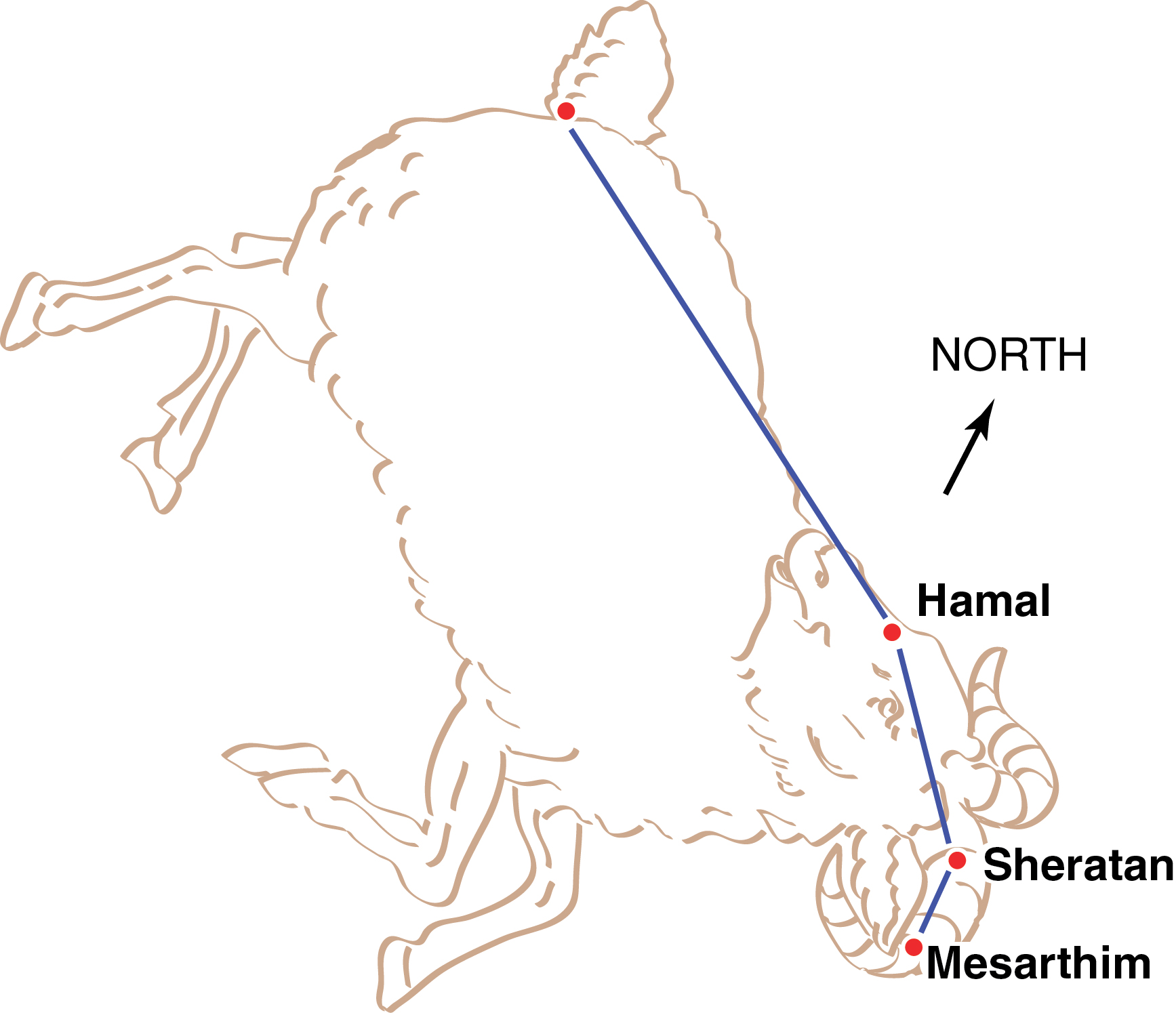
Aries is famous not because of its brilliance, though, but because of its location: It is one of the 12 constellations of the zodiac. These constellations straddle the Sun’s path across the sky, known as the ecliptic. In ancient times, that gave these regions of the sky extra significance.
Aries was the most significant of all. At the time the constellations were named, the Sun appeared against the stars of Aries at the vernal equinox, which is the first day of spring in the northern hemisphere. With the earth awakening from its winter slumber, the equinox was a time of celebration. And it usually marked the beginning of a new year.
Today, the Sun’s location at the equinox is still known as the “first point of Aries,” even though the Sun is in Pisces. The change is caused by a slow wobble in Earth’s axis. The Sun will return to Aries — and the ram will regain his status as the leader of the zodiacal flock — when we complete one full wobble, in about 22,000 years.
Hamal, the constellation’s brightest star, is classified as an orange giant. That means it is much larger and brighter than the Sun — bright enough to see even though it is more than 65 light-years away. Giant stars have burned through the original hydrogen fuel in their cores. The cores “retool” to process other elements: They shrink and get hotter. In response, the outer layers puff outward. A giant can expand from about the size of the Sun, which is less than a million miles in diameter, to tens of millions of miles. Hamal has one known planet, which is a giant ball of gas similar to Jupiter, the giant of our own solar system. It’s so close to Hamal that its atmosphere is being blown off into space.
One of the ram’s most important stars is too faint to see without a telescope. Yet half a century ago, it played a key role in a revolutionary discovery: Most of the chemical elements on Earth — and in our bodies — were forged in the stars.
For a long time, scientists didn’t know where the oxygen, silicon, iron, and other heavy elements that make up Earth came from. A faint star in Aries, HD 19445, along with a star in Libra, helped point the way.
In 1951, astronomers reported that these two stars had much less iron and calcium than the Sun. It was a shocking report, because most astronomers thought that nearly all stars had the same composition. Around this time, though, they realized that the two iron-deficient stars were very old, so they had formed in the galaxy’s earliest years. Since the stars had little iron, it meant that the young galaxy itself had little iron. The galaxy has grown more iron-rich over time, though, as stars created iron and spewed it into space. So younger stars like the Sun have higher concentrations of iron and other heavy elements than older stars. The implication of this discovery was simple but profound: The stars created the iron in our blood, the calcium in our bones, and the oxygen we breathe.